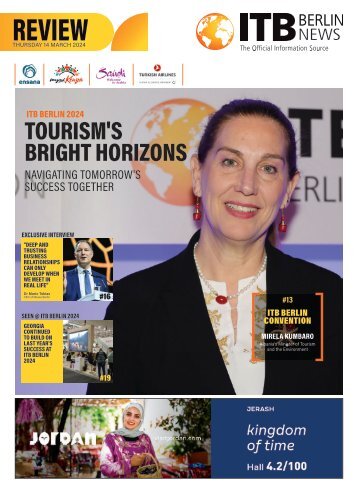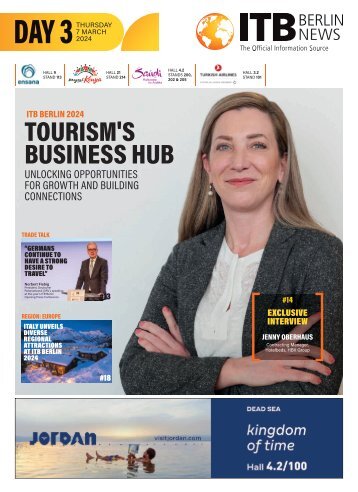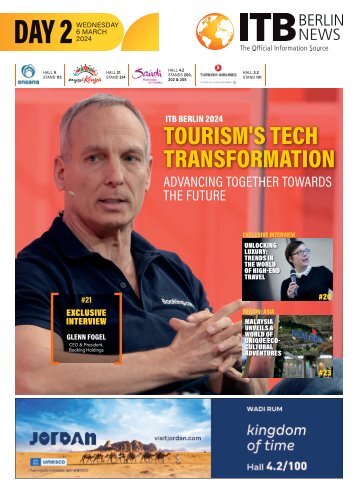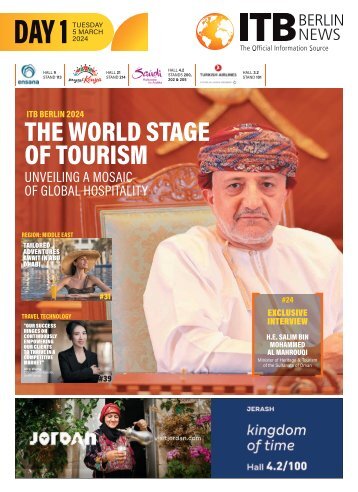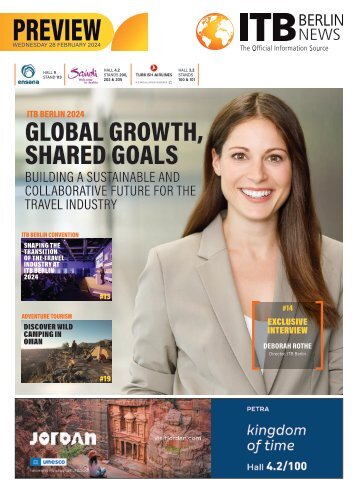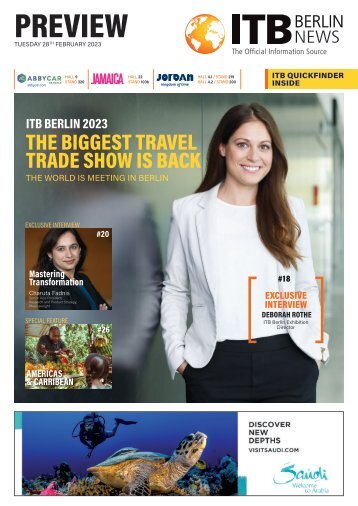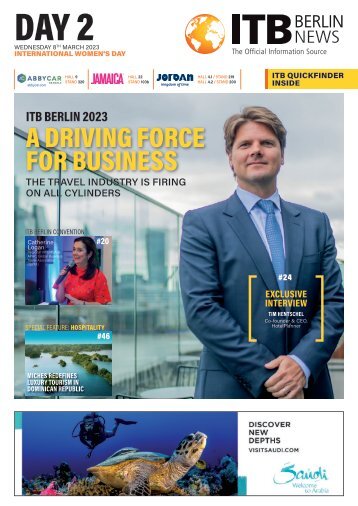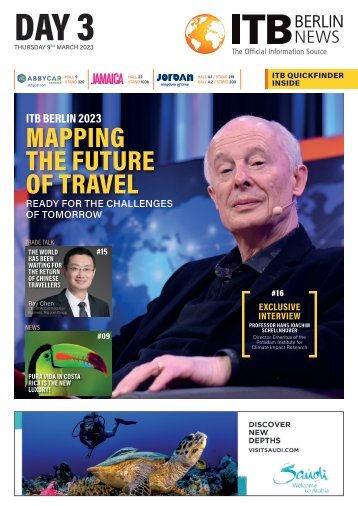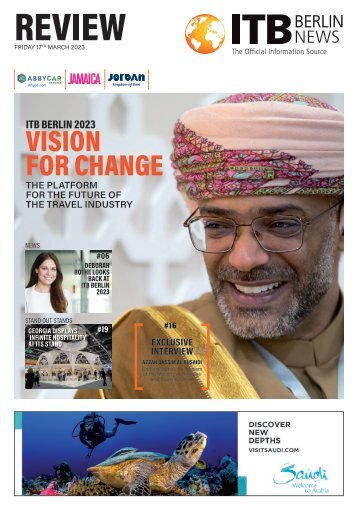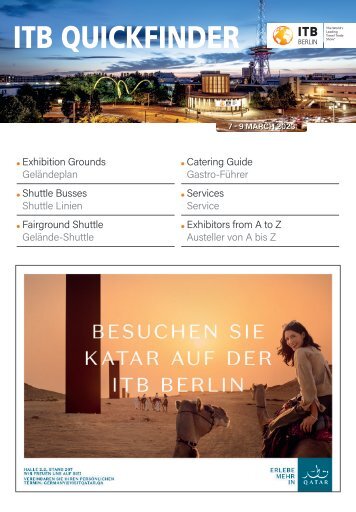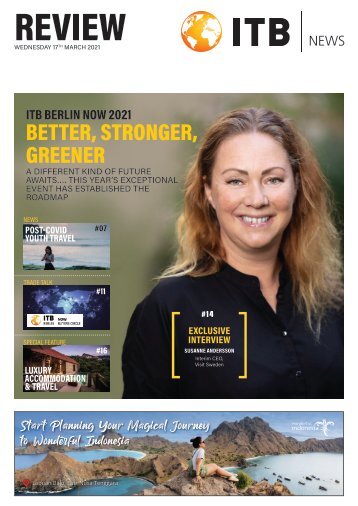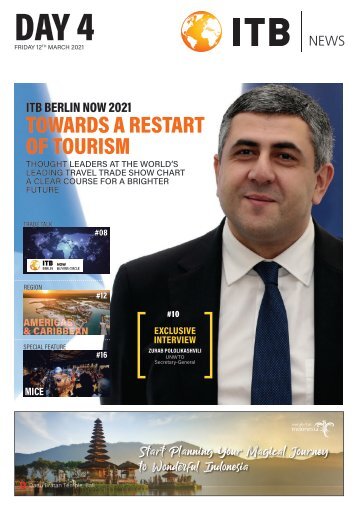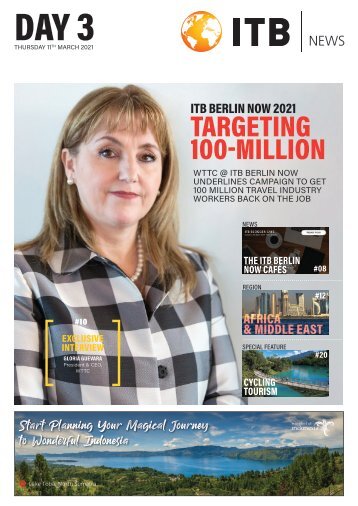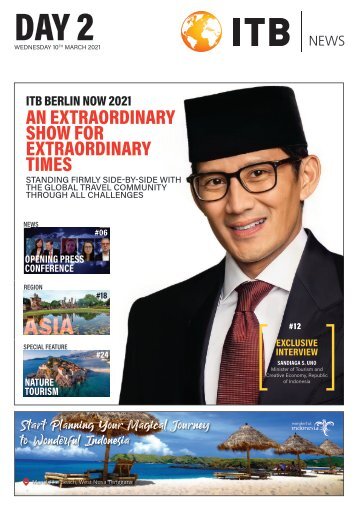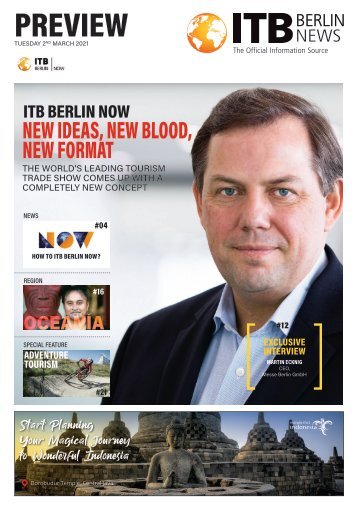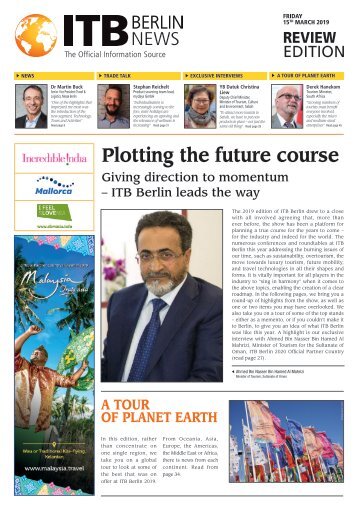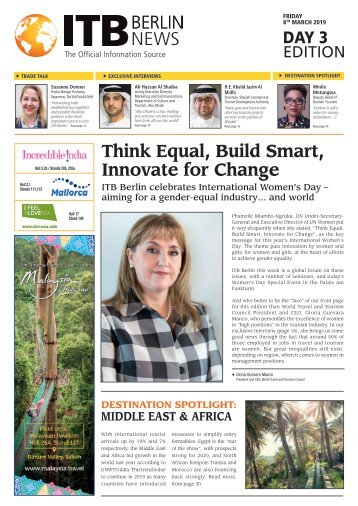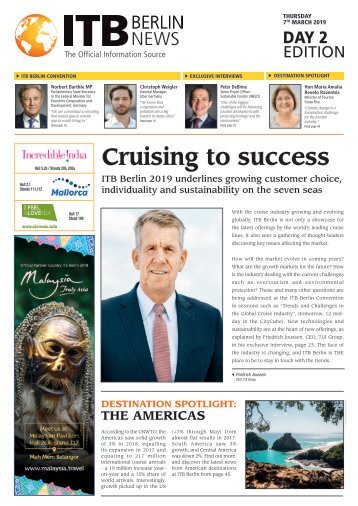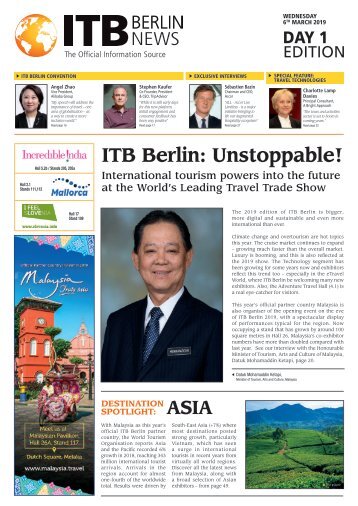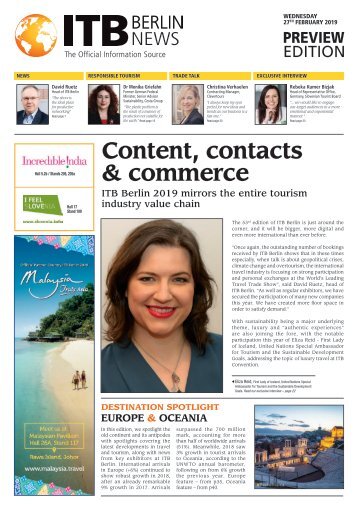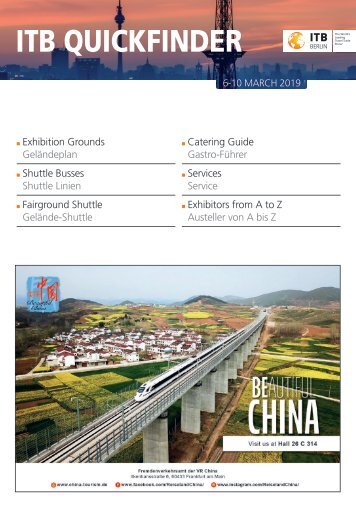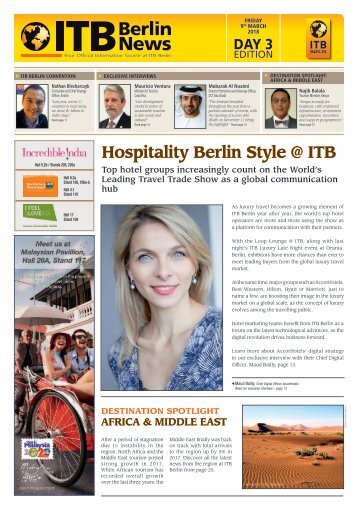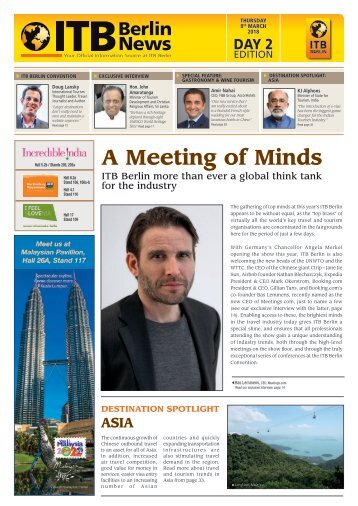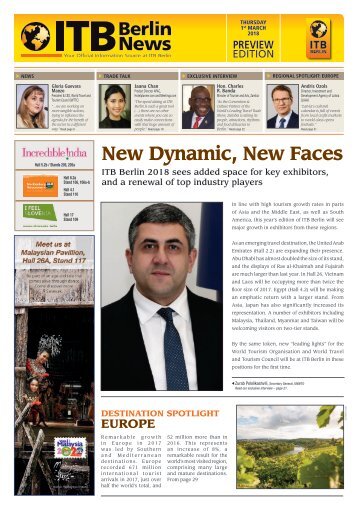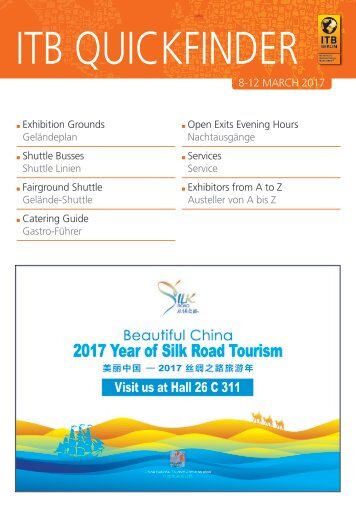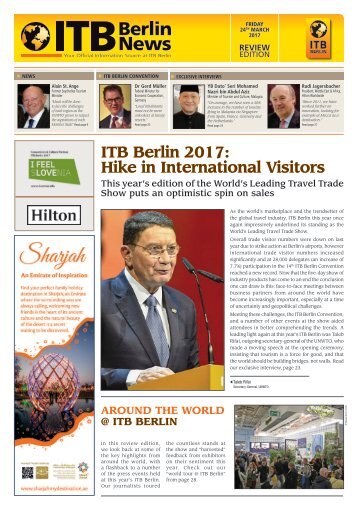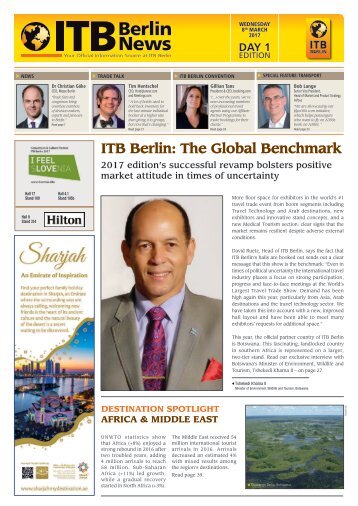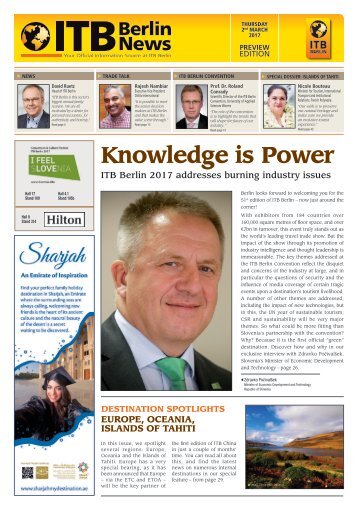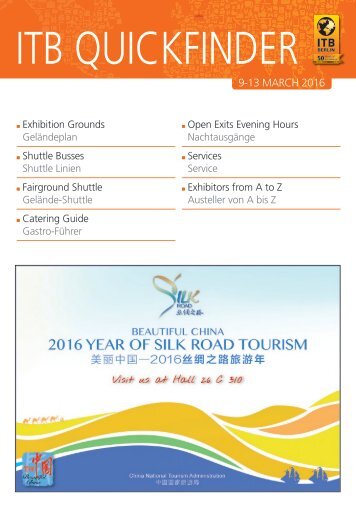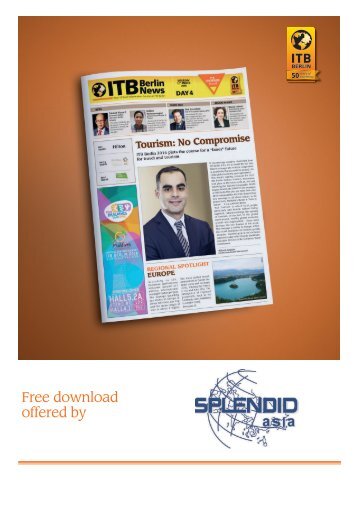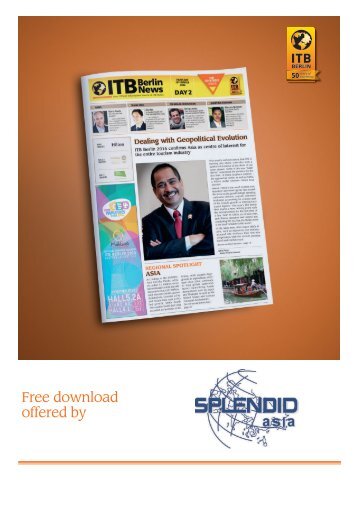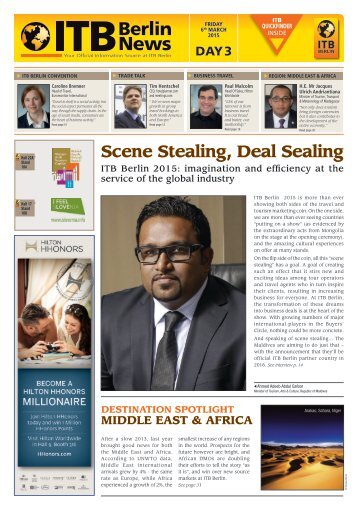
ITB Berlin News Preview Edition
- Text
- Tourism
- Hotels
- Tours
- Berlin
- Resort
- Resorts
- Exhibitors
- Tourismus
- Halle
- Aussteller
- Preview
38 REGION South Pacific
38 REGION South Pacific The message for Tourism Professionals: “You’ve got to be carefully taught” about how to market the rare pearls… What are the key trends for tourism in South Pacific? We put the question to Chris Flynn, Regional Director-Pacific, Pacific Asia Travel Association (PATA), based in Sydney, Australia… Tourism in the South Pacific is seeing steady growth, albeit from a relatively low base when viewed in conjunction with other international regions. That, however, is to be expected, as we are talking about huge geographical spread, limited critical mass and challenging air capacity and connectivity serving these destinations. There is strong growth however, particularly in some key sectors. Cruise traffic in particularly is increasing at a rapid rate, especially from Australia, the South Pacific’s key source market. As new product is created by the cruise companies and the sector is becoming more affordable and desirable, this bodes well for the region. We are also seeing a shift in desire for niche and/or adventure tourism product such as Diving, Surfing and Cultural Tourism. The region can boast a plethora of opportunities when it comes niche product and opportunities. And as this industry well knows, it’s niche product that drive yield! What do you feel are the “best kept secrets” that travel professionals should know - the rare pearls? The South Pacific is without question one of the few pristine environments left on the planet. As such, IT’S NOW UP TO THE INDUSTRY TO TAKE A DEPARTURE FROM ITS MORE TRADITIONAL PATH AND FIND NEW GROUND it is imperative that this uniqueness be protected and nurtured. It’s not simply about growing visitor numbers, but about the protection of culture, heritage and the environment by attracting those travellers who understand and respect these core values. Moving forward, we thus need to create more awareness of the regions cultural and environmental diversity and sensitivity. Examples include the many distinct tribal peoples of Papua New Guinea, a country where three quarters of the world’s languages are spoken, or the mysterious stone monuments of Tonga and Samoa. Then there is the mysterious lost ancient city of Nan Madol on the island of Pohnepei, in Micronesia, a unique place where you canoe through the streets and channels. Each of these Islands and their people are different. They have unique stories to tell, and they are amazing! Research shows that more and more travellers are seeking destinations that offer rewarding, more authentic experiences as a way to escape their usual lives. There’s a growing trend for uniqueness of a product and/or destination, a distinct move away from the ‘Bling’, as visitors opt for simpler, more transparent, culturally rich products and services. At last, we see an ever-increasing appreciation of the need to give back. If you take all this on board, where in the world can you find such a place… and in many Nan Madol ruins. Pohnpei island, Micronesia © CT Snow Chris Flynn Regional Director-Pacific, Pacific Asia Travel Association (PATA) different and varied forms? The Pacific! It’s now up to the industry to take a departure from its more traditional path and find new ground, seeking new ways to actively promote and position the Pacific. If they do, they will attract new visitors; those willing to pay for the privilege of visiting this last frontier. More precisely, what could be done better when it comes to promoting these regions? The Pacific is made up of small island communities with small populations and economies to match. With approx. 6m people living in the region and 4.5m located just in PNG, then you can see the essence of the problem. How do the island nations of the region compete with the massive budgets of some of their competitor destinations? The answer is… they can’t. Determining the best and most cost effective way to promote their destination is therefore critical. New marketing tools that offer opportunities to penetrate and influence travellers or potential travellers are emerging every day. These offer unprecedented opportunities for small or emerging destinations to capitalise on these growing technologies. Understanding them and how to maximise them is key. PATA works with the key tourism disruptors or influences as a means of educating its members on how to embrace these opportunities so as to make budgets go further and penetrate deeper. In the future, the ability to customise products and services rather than just mass-produce or commoditise a destination will be the key to success. ITB BERLIN NEWS • Thursday 26 th February 2015 www.itb-berlin-news.com
OCEANIA REGION 39 The Land Where Time Stands Still Papua New Guinea is increasingly seen as THE destination where one goes “back in time” European leisure travel to PNG increased by 16% in the 2014 (even though it’s still small numbers). ITB Berlin is thus essential for the country’s Inbound Operators and products who can meet here face to face with European product managers. In their 31 st year as exhibitors at ITB Berlin, Papua New Guinea is promoted at the show as a place where time “feels like it is standing still”... We asked Rhett Lego, Account Director Europe, PNG Tourism Promotion Authority, what the key factors are that make this destination interesting today… 1/ CULTURAL DIVERSITY! Travellers can experience very ancient cultures first hand. 800 indigenous languages exist in the country; this is about the third of the world’s tongues. The traditional Melanesian cultures – more than 200 have been identified – are kept alive in elaborate rituals. The best way to experience this colourful diversity is to attend one of the cultural festivals, called sing sings, where groups from all over the country sing and dance. The biggest and most impressive ones are Mount Hagen and Goroka Show held in August and September. 2/ DIVING! Papua New Guinea is internationally recognised as one of the best dive destinations in the world. Many international awardwinning photos have been taken in this underwater paradise. Located in the Coral Triangle of marine biodiversity, Papua New Guinea has the highest diversity of tropical fish and coral in the world. With dive operators offering land-based and live-aboard diving along 17.000 km of coastline and 45.000sq km of reef systems, divers can enjoy minimal contact with other dive groups. The huge diversity of diving sites includes barrier reefs, coral walls, coral gardens, patch reefs, fringing reefs, sea grass beds, coral atolls and wrecks. IT’S A LOT EASIER, SAFER AND POTENTIALLY CHEAPER TO TRAVEL TO PNG THAN ONE WOULD THINK 3/ ADVENTURES IN MAGNIFICENT NATURAL SCENERY! Visitors can spend their holidays trekking remote jungle tracks of Kokoda, Mt. Wilhelm (with 4.509 metres the country’s highest mountain), Bulldog and Black Cat treks in Morobe or the Baining trek in East New Britain. Cruising the mighty Sepik River or Surfing the waves in Vanimo also forms part of the adventure attractions. 4/ BIRD LOVERS’ PARADISE! Papua New Guinea is home to some 700 species of birdlife, including parrots, pigeons, hornbills and cassowaries (PNG’s largest bird), but it is best known for the brilliantly coloured Bird of Paradise. 38 of the world’s 43 known species can be found in PNG. The bird’s courtship dance is imitated by the Huli Wigman in their traditional dances. Would it be true to say that this is truly one of the last untouched wildernesses in the world? Definitely. PNG is home to the largest area of intact rain forest outside of the Amazon. Vast tracts of the country are wild und undeveloped, with magnificent scenery that ranges from pristine coral atolls to volcanic mountains, dense tropical rainforest and large rivers. The mainland is divided by the Owen Stanley Range, a massive central spike with peaks towering over 4,000m. Great rivers begin their journey to the sea from these mountains, among them the mighty Sepik River, one of the world’s longest waterways. Except the Highlands Highway, there nearly are no roads. One needs to travel by plane. What makes Papua New Guinea village cultures so different to anywhere else? The ancient cultures remain very strong in the villages. Traditions, customs and rituals still play an important role in daily life. Within one region, village cultures can be very different. Visitors to country areas, especially in the Highlands, will often find local variations in village construction, dialect and dress. The village communities still live from subsistence farming. Pigs are very important in the local culture: they indicate the wealth of a man. On New Ireland, locals can still pay with shell money (Kina shells) when they come from very remote areas and don’t have any money. The Tolaï Exchange Bank changes shell money into Kina (the PNG currency). More and more villages build guesthouses to be able to offer accommodation for visitors. A truly unique experience to spend one or several nights within the village community and participate in the locals’ daily life. The village people are the most welcoming people as long as one doesn’t cross their land without permission or invitation. There still is some pioneer atmosphere/ feeling when one does a village stay. PNG remains a land for travellers, not for mass tourism. Online bookings for village stays are possible through the platform villagehuts.com What will the key message be for ITB Berlin 2015? Papua New Guinea boasts world class experiences that are not limited to group travellers, but also available for free independent travellers. It’s a lot easier, safer and potentially cheaper to travel to PNG than one would think. Free independent travellers can easily get around as long as they plan their itinerary carefully and are smart travellers. Many European tour operators and travel agencies are able to put together an array of experiences that suit the individual travellers’ needs. Hall 5.2A Stand 106 © kirklandphootos ITB BERLIN NEWS • Thursday 26 th February 2015
- Page 1: THURSDAY 26 th FEBRUARY 2015 PREVIE
- Page 5 and 6: NEWS 5 More International Than Ever
- Page 7 and 8: NEWS 7 German Tourists Flock Back t
- Page 9 and 10: NEWS 9 United Arab Emirates at ITB
- Page 11 and 12: NEWS 11 © China Tours Hamburg Hall
- Page 13 and 14: NEWS 13 The Lansky Effect A smart,
- Page 15 and 16: NEWS 15 When Travel and Tourism Mee
- Page 17 and 18: Hall 2.1 Stand 200 NEWS 17 ADVERTOR
- Page 19 and 20: TRADE TALK 19 The Importance of a R
- Page 21 and 22: ITB BERLIN CONVENTION 21 Reaching T
- Page 23 and 24: ITB BERLIN CONVENTION 23 PROGRAMME
- Page 25 and 26: EXCLUSIVE INTERVIEW 25 lin sm growt
- Page 27 and 28: EDUCATION / TRAINING SPECIAL FEATUR
- Page 29 and 30: Hall 2.1 Stand 200 HONEYMOONS SPECI
- Page 31 and 32: SHOPPING TOURISM SPECIAL FEATURE 31
- Page 33 and 34: ADVENTURE TOURISM SPECIAL FEATURE 3
- Page 35 and 36: YOUTH TRAVEL Millennial Traveller I
- Page 37: OCEANIA REGION 37 © Tourism New Ze
- Page 41 and 42: OCEANIA REGION 41 The Lure of Prist
- Page 43: 43 WHERE TO GOIN BERLIN recipe of t
- Page 46 and 47: EXHIBITION GROUNDS GELÄNDEPLAN Hal
- Page 48 and 49: SHUTTLE BUSSES & FAIRGROUND SHUTTLE
- Page 50 and 51: SERVICES SERVICE Airports Informati
- Page 52 and 53: EXHIBITORS FROM A TO Z AUSTELLER VO
- Page 54 and 55: EXHIBITORS FROM A TO Z AUSTELLER VO
- Page 56: EXHIBITORS FROM A TO Z AUSTELLER VO
- Page 59 and 60: D / E / F EXHIBITORS / AUSSTELLER H
- Page 61 and 62: F / G / H EXHIBITORS / AUSSTELLER H
- Page 63 and 64: H / I / J / K EXHIBITORS / AUSSTELL
- Page 65 and 66: K / L / M EXHIBITORS / AUSSTELLER H
- Page 67 and 68: M / N / O EXHIBITORS / AUSSTELLER H
- Page 69 and 70: O / P / Q / R EXHIBITORS / AUSSTELL
- Page 71 and 72: R / S EXHIBITORS / AUSSTELLER HALL
- Page 73 and 74: S / T EXHIBITORS / AUSSTELLER HALL
- Page 75 and 76: T / U / V EXHIBITORS / AUSSTELLER H
Inappropriate
Loading...
Mail this publication
Loading...
Embed
Loading...
